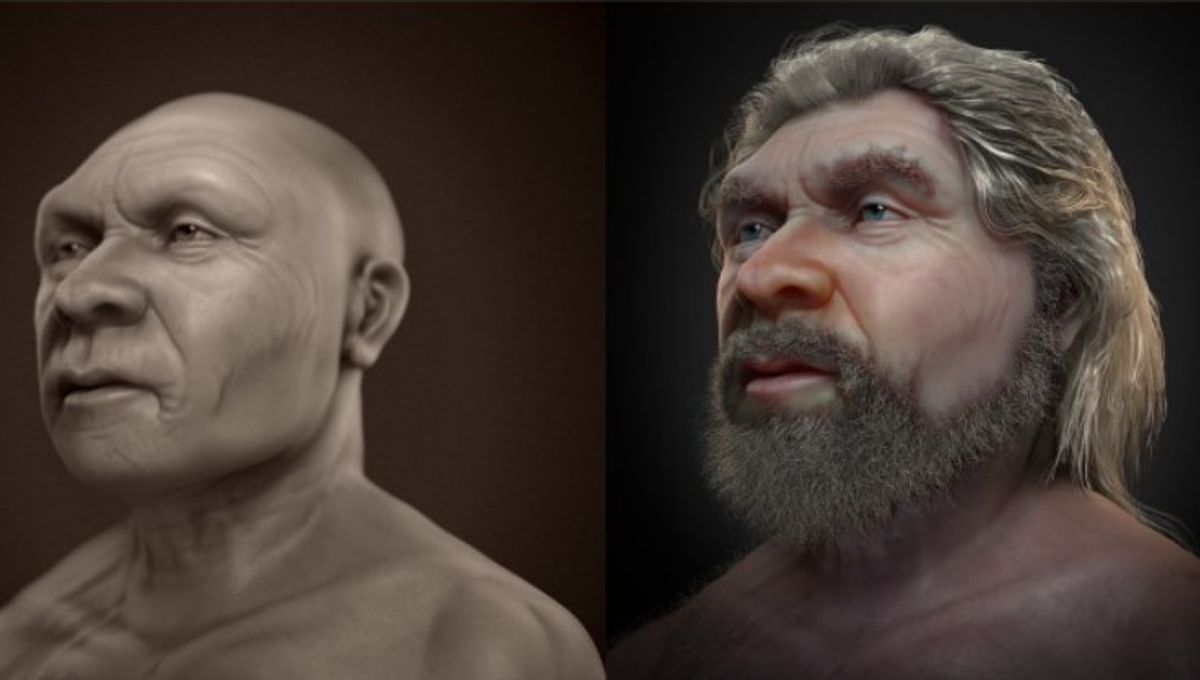
A team of researchers has reconstructed the face of a mature Neanderthal gentleman who lived and died roughly 50,000 years ago in modern-day France, revealing that our extinct cousins didn’t look all that different from us. Illustrating the ancient senior’s remarkably modern human-like features, the digital portrait contributes to our growing understanding of the similarities between Neanderthals and Homo sapiens, reinforcing the narrative that the former weren’t as primitive as we once thought.
Known as the Old Man of La Chapelle, the Neanderthal in question was originally discovered in 1908 by brothers Amadee and Jean Bouyssonie while exploring the cave of Chapelle-aux-Saints in southwest France. Subsequent analyses of the skeleton revealed that the man was at least 60 years old at the time of his death and that he roamed the Earth some time between 56,000 and 47,000 years ago.
Interestingly, the Neanderthal’s remains tested positive for brucellosis, an infectious disease caused by bacteria that is usually contracted as a result of consuming unpasteurized dairy products. According to the researchers, this may represent one of the earliest documented cases of an illness being transmitted from animals to humans.
“When this Neanderthal skeleton was discovered in 1908 it contributed to the advancement of studies on our ancestors,” said study authors Professor Francesco Galassi and Dr Elena Varotto – from the University of Lodz and Flinders University respectively – in an email to IFLScience. “With the passing of time, it has continued to interest researchers. Our study follows in the tradition of these studies and will also consider this individual’s brain features.”
To recreate the Old Man’s face, the researchers combined previous computed tomography scans of the skull with an updated model that was created using photogrammetry. They then imported soft-tissue thickness markers from scans of modern individuals, modeling these so that they could be meshed with the shape of the Neanderthal’s facial bones.
The resulting images reveal that while the Old Man possessed classic Neanderthal tropes such as a broad nose, pronounced brow, and a lack of a true chin, his appearance wasn’t quite as brutish as the established stereotype for his species. This finding is very much in line with recent research, which has revealed that Neanderthals were probably less ape-like than they are often depicted, and may even have been as intelligent as modern humans.
“We often think we know a lot of Neanderthals, but our understanding of their anatomy and physiology is always evolving and with it our perception of them,” commented study co-author Professor Luca Sineo from the University of Palermo. If this elegant reconstruction is anything to go by, the evolutionary chasm between them and us may not have been such a wide one.
Source Link: Face Of ‘Old Man’ Neanderthal Reconstructed After 50,000 Years